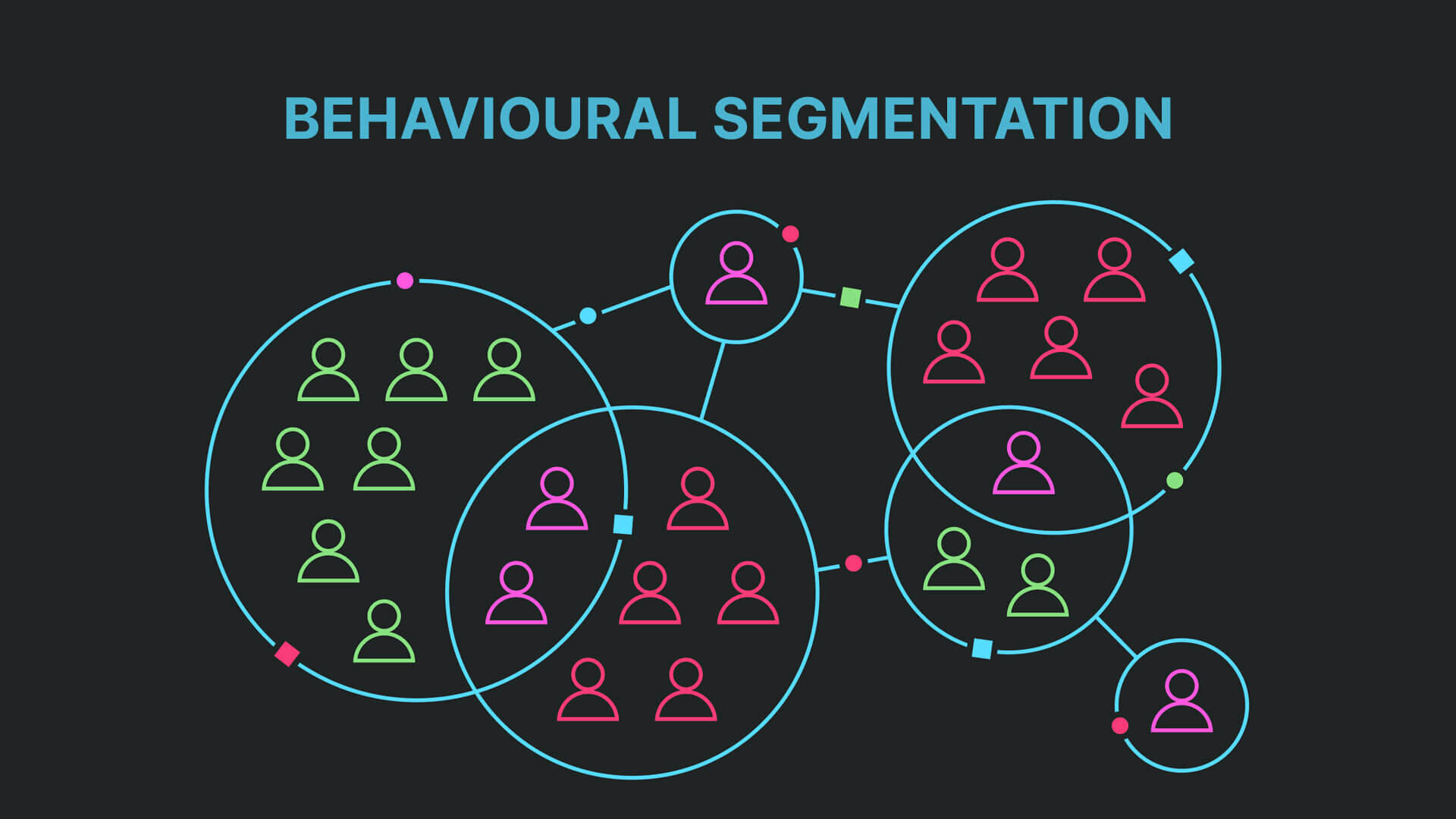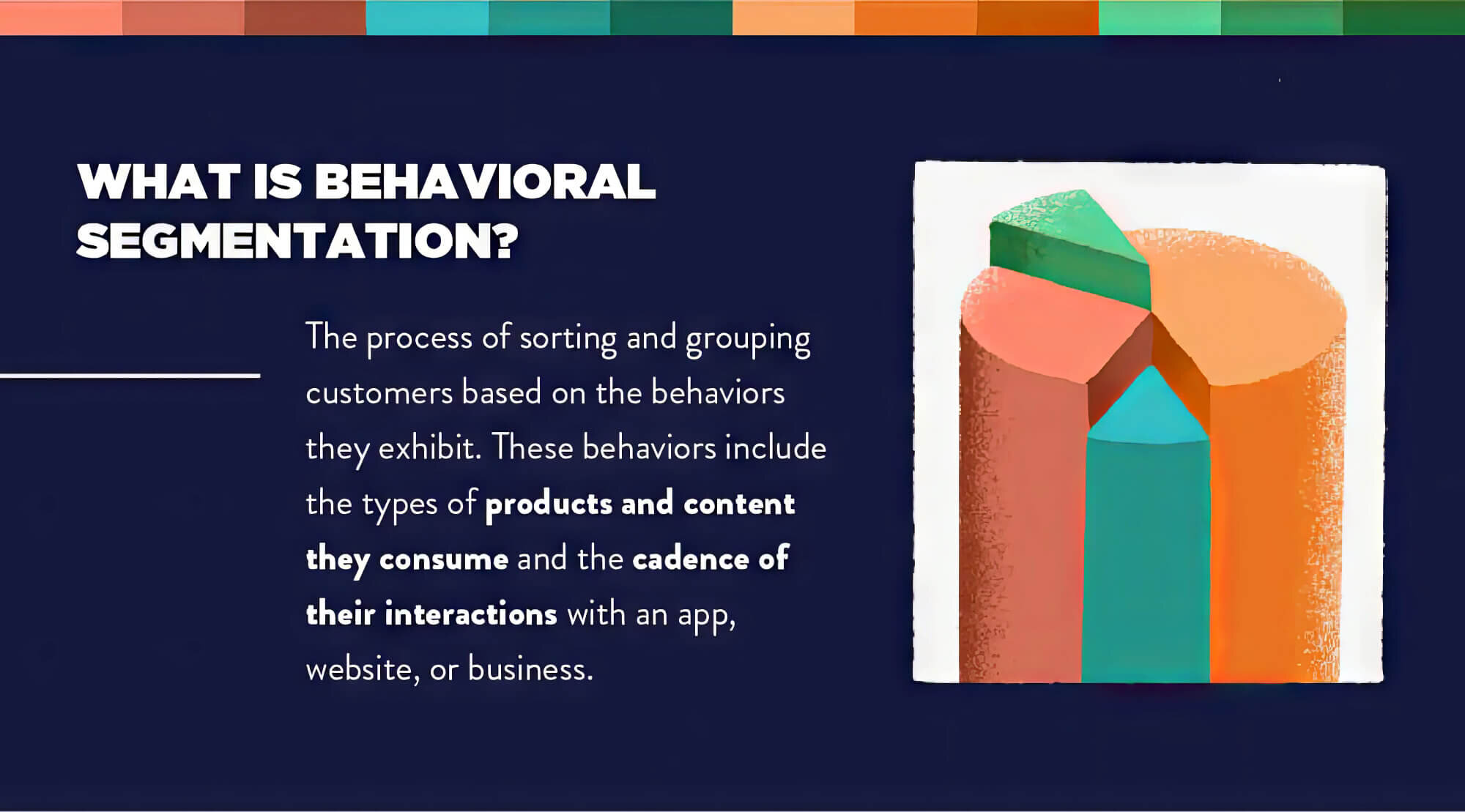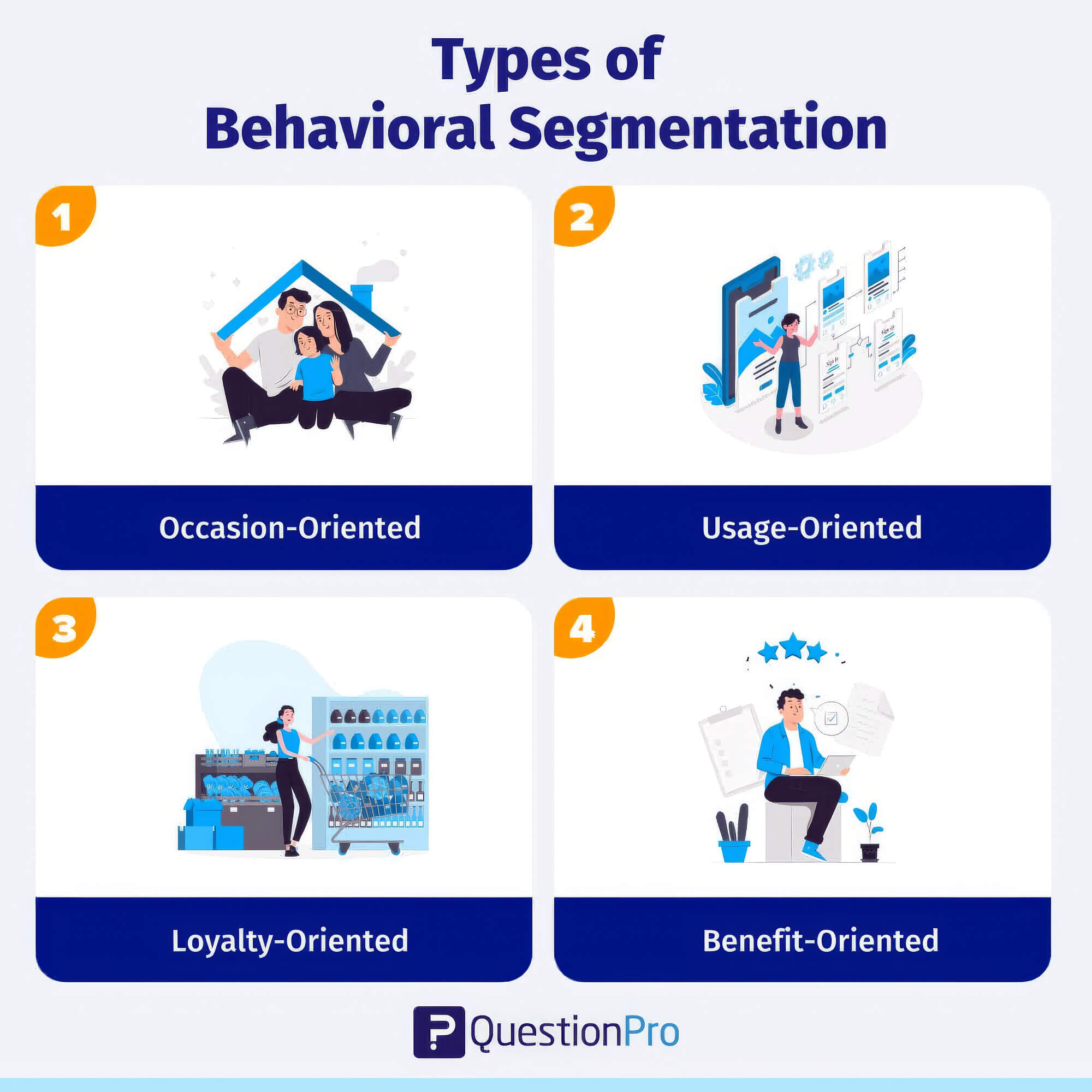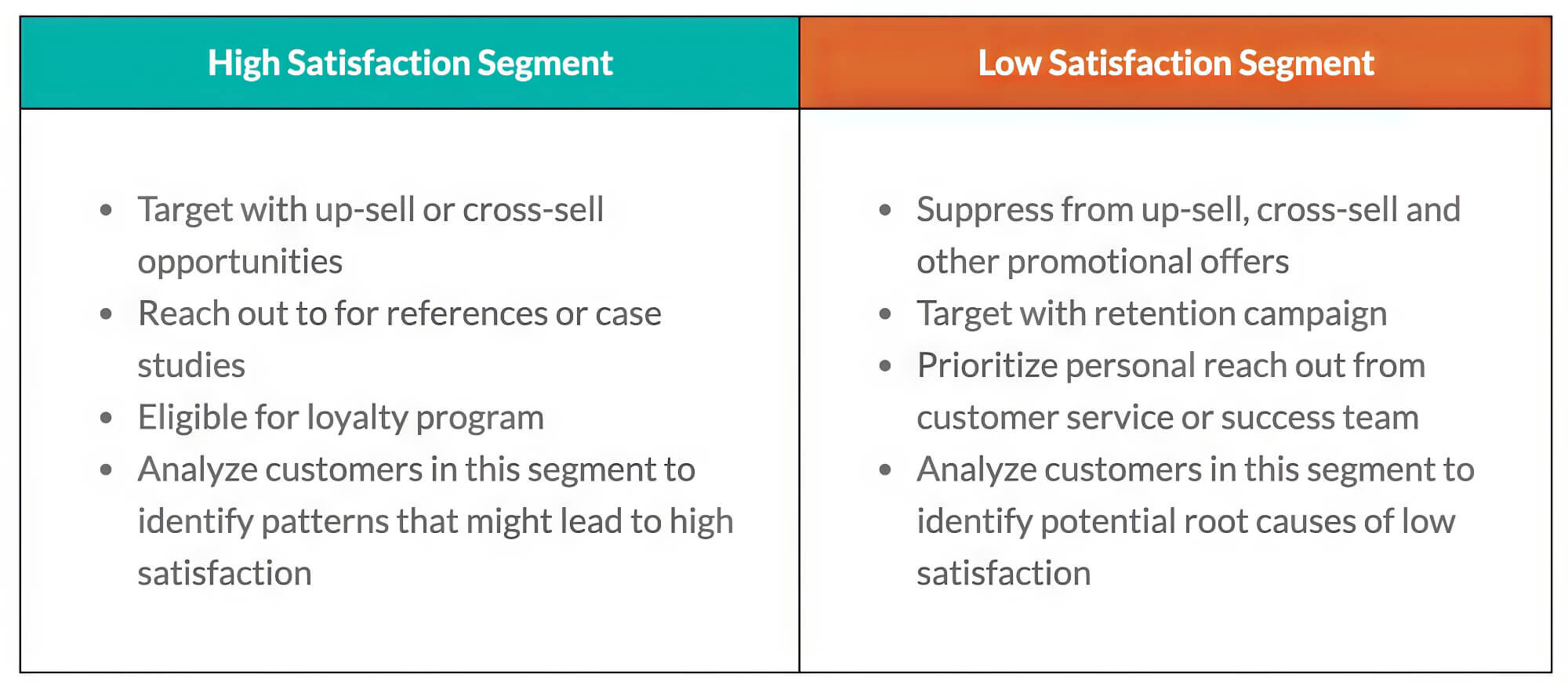Behavioural segmentation is one of the most significant types used in marketing.
It is the process of dividing customers into different segments according to their behavioural patterns. Such patterns can include their tastes and preferences regarding specific products, product usage behaviour, brand knowledge, etc.

Behavioural segmentation allows businesses to grasp customer behaviour patterns, offering insights into their purchasing habits and thought processes when choosing products or services. This approach, unlike geographic or demographic segmentation, paints a fuller picture of customer mindsets.
This information can be used to improve the marketing strategy used by a business so customers are more likely to choose that brand over others. However, for any business, segmenting its target audience properly for better targeting requires proper planning and research.
For effective segmentation, having accurate data analytics capabilities and adhering to privacy laws is essential. This guide provides comprehensive information on behavioural segmentation across industries. It aims to help businesses understand its benefits, influence purchasing behaviour, and overcome challenges to succeed.
Want to receive updates? Sign up to our newsletter
Each time a new blog is posted, you’ll receive a notification, it’s really that simple.
The Basics Of Behavioural Segmentation
Behavioural segmentation starts with collecting and analysing customer data related to their actions and interactions with the business. This data can be gathered from various sources, such as website analytics, purchase history, and segmentation examples like loyalty programmes, social media engagement, email interactions, and mobile app usage.
Behavioural indicators provide detailed information regarding customer habits, interests and preferences, enabling businesses to grouping customers with similar traits into distinct segments. For instance, customers of varied user status who make high-value purchases from a brand may be classified as key customers or repeat customers. Others who might engage with the brand on social media but have not made any purchases can be categorised as engaged followers.

More importantly, compared to traditional demographic or geographic segmentation, behavioural segmentation does not restrict itself to static characteristics, like an average customer’s location, gender, and age. It focuses on real-life scenarios, allowing businesses to target customers based on the occasion or timing of actions, such as occasion-based purchases like birthdays.
Furthermore, segmenting customers based on factors like their purchasing process and habits allows businesses to identify potential customer segments that might be excluded in geographic and demographic segmentation. And with a better understanding of customer preferences, companies can develop products and services that result in greater customer satisfaction.
Collection And Analysis Of Data For Behavioural Segmentation
Data for behavioural segmentation can be collected from various sources, such as the purchase history of customers and website interactions. Companies can identify their preferences and buying habits by carefully tracking and analysing past purchases, enabling targeted product recommendations and personalised offers.
Tracking website interactions, such as page visits, time spent on pages, and search queries, reveals vital insights into customer interests and needs. Patterns from website and social media engagement, along with click-through rates (CTR), can guide content delivery and communication effectively.
Businesses can leverage such data regarding customer behaviour to develop marketing campaigns that deliver fast, more effective results, resulting in better returns, greater customer satisfaction, and more loyal customers.
Benefits Of Behavioural Segmentation
1. Personalisation
Behavioural segmentation allows businesses to craft personalised messages based on specific customer behaviours, such as occasion purchasing. By understanding how customers use your product or interact with services, companies can deliver targeted content that customers can connect with easily.
2. Enhanced Customer Experience
Tailoring content according to the customer’s buying history and past experiences results in a more satisfying customer experience. When customers receive relevant recommendations and promotions, they feel valued and understood, leading to higher levels of engagement and customer loyalty, which can help increase customer lifetime value. Promotions, such as a loyalty programme, can help achieve these goals.
3. Improved Conversion Rates
By conducting in-depth research into purchase history and buying patterns, businesses can offer products based on browsing habits likely to result in greater conversions and sales. Engaging customers with products and services with a higher likelihood that they are likely to buy can encourage them to make a purchase decision and buy. Occasional customers can also be converted into regular ones in this manner.
{{img:'explaining-behavioural-segmentation.jpg' | height | width | alt | title | lazyload | responsive}}
4. Reduced Marketing Waste
Behavioural segmentation enables businesses to focus their marketing efforts on the most relevant customer segments. By identifying and targeting individuals who have demonstrated interest in similar products or exhibited specific behaviours, companies can avoid wasting resources on other customers who may not be that relevant.
5. Product Development Insights
Analysing behavioural data provides valuable insights into customer preferences and pain points. Businesses can use this information to refine existing products or develop new ones that better cater to the needs and desires of specific segments. This information can be easily obtained from the most engaged users on platforms like the brand website and social media.
Implementing Behavioural Segmentation
1. Data Collection
A. Identify Relevant Data Sources
The first step is determining the data sources most relevant to the business and marketing goals. Common sources include purchase history, website analytics, social media interactions, email engagement and mobile app usage.
B. Implement Data Tracking
Data tracking mechanisms can help capture relevant customer behaviours. Businesses can use cookies, tags, pixels, or other tracking technologies to gather data across different channels.
C. Create A Database
Data collected from various sources must be integrated into a unified database or a Customer Relationship Management (CRM) system. Integration helps provide a comprehensive view of customer behaviour.
2. Data Analysis
A. Segment Identification
The collected data has to be analysed to identify customers, and segmentation looks at the most meaningful segments based on shared behaviours and characteristics. Then, data visualisation and statistical techniques can be used to uncover trends and patterns.

B. Define Segmentation Criteria
Establish clear criteria for segmenting customers while considering factors like purchase frequency, average order value, website engagement, and other relevant behavioural metrics.
C. Refine Segments
Segments, once defined, need to be periodically reviewed and updated in light of new data. The reason is that behavioural patterns can evolve, and adjustments are necessary to keep the marketing segmentation strategy relevant.
3. Campaign Customisation
A. Personalised Messaging
This involves crafting marketing messages tailored to different segments’ behavioural patterns and preferences using languages, offers and content that align with their interests, needs and previous interactions. For instance, customers who make purchases on recurring personal occasions can be sent reminders.
B. Dynamic Content
One of the most effective behavioural segmentation techniques is implementing dynamic content on the website and marketing materials. Such content should show relevant products, recommendations, or offers based on different behaviours. Loyalty-based segmentation can also be utilised, providing special offers to loyal customers.
C. Triggered Campaigns
Brands can set up triggered campaigns based on specific behavioural actions, such as abandoned cart emails, re-engagement campaigns for inactive users, or personalised product recommendations.
D. Test And Optimise The Campaign
You will need to test different messages and offers for each segment continuously to identify what is most effective in each case. A/B testing for the marketing material and data-driven insights can be beneficial in optimising campaigns and improving results.
Case Studies: Successful Behavioural Segmentation Strategies
1. BabyCentre UK Segments Its Market Based On Usage Behaviour
BabyCentre UK is a healthcare institution focusing on childcare and pregnancy that uses personalised messaging for its customer base through the Facebook Messenger app. It relies on targeted messaging and provides personalised advice depending on the input it gets from users.
For instance, a parent dealing with a weaning problem can receive a list of symptoms that indicate the problem. Additionally, the app can suggest recipes to help the child learn to eat solid food.
2. Guinness Utilises Occasion-Based Segmentation To Expand Its Reach
Guinness is a stout manufacturer based out of Ireland that used market segmentation to reach audiences that actively avoided alcohol. At the same time, it wanted to retain existing customers and increase brand loyalty. To do so, the company started marketing a new product, Guinness Clear, which contained the new ingredient H2O.

Despite the new product being just water, the campaign became one of the most successful marketing campaigns for the brand by dividing the target audience into multiple segments. Loyal customers wanted to learn more about the product, while others who tended to avoid alcohol also became engaged.
3. Olay Combines AI And Behavioural Segmentation To Offer Product Recommendations
Olay is an American skincare brand that combined the power of its Artificial Intelligence (AI) powered chatbot with behavioural segmentation to provide product recommendations. The Skin Advisor, the AI-powered brand tool, acquires information from customers regarding their skin by asking them a few questions. The Advisor can detect the skin’s age and recommend the most suitable products using the information obtained.
Additionally, the brand can use customer information to improve its products, creating offerings that can offer greater satisfaction. For instance, Olay discovered that specific customers required fragrance-free options, which helped them create and launch a new product to meet those needs.
Overcoming Challenges In Behavioural Segmentation
When implementing behavioural segmentation, businesses may encounter various challenges that can impact the effectiveness of their marketing efforts. Some of the most common challenges and solutions are mentioned here.
1. Data Privacy Concerns
Collecting and using data for behavioural segmentation can lead to customer privacy concerns. If not handled properly, this can lead to resistance, reduced trust, and even legal issues. To avoid these, businesses should prioritise data privacy and compliance with laws and regulations that customers may be concerned about.
For this purpose, obtaining explicit consent from target customers for data collection is vital. Brands should be transparent about data usage and provide clear information about how data will be utilised to deliver personalised experiences.
2. Data Accuracy And Quality
Inaccurate or incomplete data can lead to incorrect segmentation and misguided marketing efforts. Data from various sources may not always align or be up-to-date. So, brands should regularly audit and update their data to maintain accuracy and invest in data quality tools and validation processes to identify and rectify errors.
In addition, they should implement data governance practices to ensure consistency and reliability across various platforms.
{{img:'behavioural-segmentation-example.jpg' | height | width | alt | title | lazyload | responsive}}
3. Interpreting Behavioural Data
Analysing complex behavioural data and extracting meaningful insights can be extremely challenging. Misinterpretation may lead to misguided marketing strategies and campaigns. To deal with such problems, skilled data analysts and data scientists who can interpret and analyse behavioural data effectively are needed.
In addition, businesses should utilise data visualisation tools to simplify complex data sets and present insights clearly and easily. The segmentation criteria should also be refined continuously depending on insights and feedback.
4. Limited Resources And Expertise
Small businesses or those with limited resources may struggle to implement sophisticated behavioural segmentation strategies due to a lack of expertise or budget constraints. The best way to utilise behavioural segmentation in such situations is to start with a simple segmentation based on the available data.
Several affordable marketing automation tools provide basic segmentation capabilities. As the business grows, businesses should consider outsourcing or hiring experts to handle more advanced segmentation strategies.
FAQs
1. What is customer loyalty segmentation?
Customer loyalty segmentation is a subcategory of behavioural segmentation that identifies and targets customers based on their loyalty levels to a product or service. It helps businesses develop strategies to retain and reward their most loyal customers.
2. Can behavioural segmentation be used to target customers at different stages of the customer journey?
Behavioural segmentation can be adapted to different stages of the customer journey. Businesses can tailor marketing efforts by understanding customer needs and actions at each stage.
3. What are light users in behavioural segmentation?
Light users are those who exhibit minimal or infrequent engagement with the products or services of a brand, compared to highly engaged customers, known as heavy users. Understanding their behaviour can help businesses encourage increased usage and brand loyalty.
4. What is Customer Lifetime Value in behavioural segmentation?
Customer Lifetime Value (CLV) is a metric that represents the total value a customer is expected to generate for a business over the long-term period they interact with it. It estimates a customer’s potential revenue through repeat purchases, referrals, and other interactions with the brand.
5. Why is it important to consider the various stages of the customer journey in behavioural segmentation?
Considering each customer journey stage in behavioural segmentation is crucial because it allows businesses to understand and target customers at different phases of the buying journey. Each stage represents a unique set of behaviours and needs, and tailoring marketing efforts accordingly can significantly impact customer engagement and conversion rates.
Move from Assumptions to Facts
Behavioural segmentation is crucial to any successful marketing strategy and helps understand and influence customer behaviour. Using behavioural data in categorising existing and new customers based on their behaviour helps create a complete customer profile that businesses can use to provide better products, services, and experiences.
Furthermore, such data can be used along with demographic and geographic data to identify previously out-of-reach customers and understand their needs and preferences. Businesses can use tailored strategies and various marketing initiatives to increase customer satisfaction.
To thrive today, brands must integrate behavioural segmentation into their marketing strategies. This approach fosters a stronger connection with target customers, enabling the business to meet its objectives efficiently.






